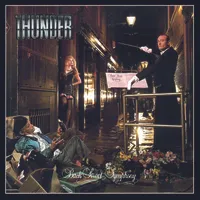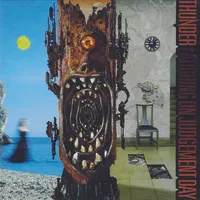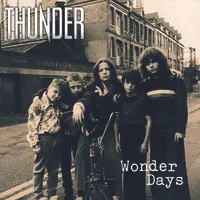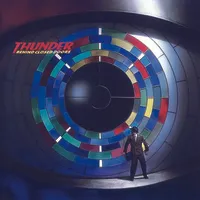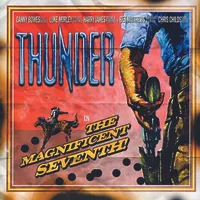Thunder: a guide to their best albums
British rockers Thunder have rarely come up short over their 30-year-plus recording career. Let’s take a closer look at their best albums
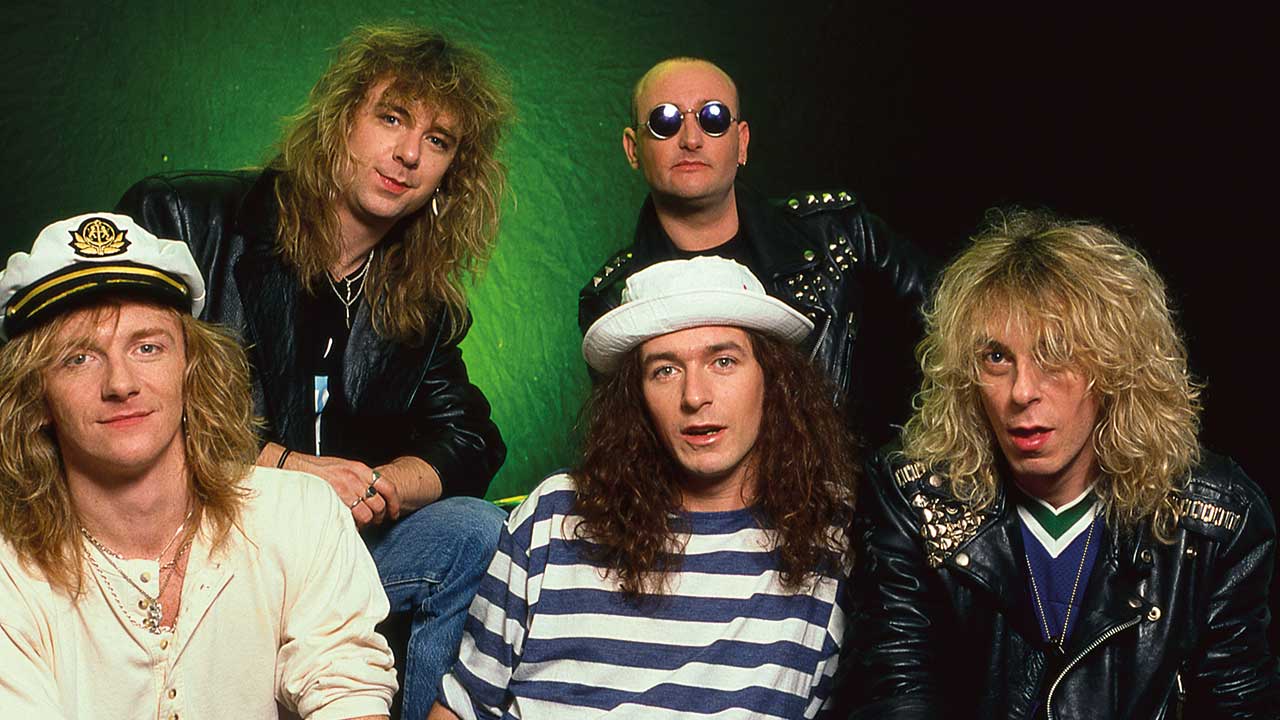
Since they formed in January 1989, Thunder’s trajectory has undulated but two things have remained constant: top-notch live performances and the bonds of friendship. Guitarist Luke Morley and singer Danny Bowes met at school more than 40 years ago, they knew drummer Gary ‘Harry’ James from a similar time and – although two other bassists played on their first three albums – Chris Childs has been in the band since 1996.
Even when Thunder have been on hiatus, members have re-teamed on side projects. The band have twice played farewell tours and twice reunited but, especially since guitarist/keyboard player Ben Matthews spent most of 2014 recovering from cancer, now appear stronger together than ever.
Thunder’s roots lie in a four-year tilt at stardom with the poppier Terraplane (two albums on Epic), after which Morley, Bowes and James were older, wiser and hungrier for success. They found it in Thunder, alongside Matthews, who engineered the demo produced by Duran Duran/Power Station guitarist Andy Taylor that led to a deal with EMI.
With Morley as their principal songwriter, the hooks and harmonies of Terraplane were retained, but welded to heavier sounds sometimes reminiscent of Bad Company but always distilling the best of 60s and 70s classic rock they grew up with and re-tooling it as their own.
They remain a quintessentially British act, popular in Japan and parts of continental Europe but largely unknown across the Atlantic. A US deal with Geffen in 1991 briefly promised North American success, but grunge scuppered that.
Of their 13 studio albums, their biggest sellers remain the first three released on EMI. Since then the band have continued on their own path, largely independent. They have often covered Wild Cherry’s Play That Funky Music, but the furthest they moved from the template was 2018’s side-step Please Remain Seated, on which they reworked their best-loved numbers.
That is not to say, though, that the band haven’t progressed. Morley is not only a lyrical guitarist but also a gifted and ever-improving songwriter, and writes the lyrics that Bowes has interpreted supremely both in the studio and on stage. Of the latter there is plenty of evidence to be found on a plethora of live releases, maybe suggesting that Thunder are an underrated studio act. But there is enough evidence here to refute that.

Back Street Symphony (EMI, 1990)
The youthful ebullience of Thunder’s debut still rings loud, clear and true more than 30 years after it was released. It plays like an English response to Guns N’ Roses’ Appetite For Destruction, released three years earlier. Even though it didn’t sell anything like as well as that album, it too was a manifesto that Thunder have been able to return to at all points in their career since.
Produced by Andy Taylor and engineered/mixed by Mike Fraser (AC/DC, Poison, The Cult, Aerosmith), it sounds big, powerful and timeless. Ahard rock classic from lead-off single She’s So Fine to the blazing closer Distant Thunder.
Laughing On Judgement Day (EMI, 1992)
Two and a half years after Back Street Symphony, the lead-in time had broadened both Thunder’s songwriting and their sonic palette, reflected in a career-longest 14-song running order.
The highlights are included in the Spotify playlist (below), but other songs impress too: the brass-fuelled Everybody Wants Her; the Zeppelin-esque Empty City; the no-nonsense stomp of Flawed To Perfection; and the Matthews/ James/Bowes credited The Moment Of Truth. In 1992 Judgement Day divided opinions, with many seemingly confused by its leap forward. Today, though, this and its predecessor stand as a brilliant pair.
All The Right Noises (BMG, 2021)
Recently Luke Morley insisted to Classic Rock: “If you work as hard as you can and apply the same commitment, there’s no reason why you can’t get better as you get older.” All The Right Noises is living proof of that.
It is, simply, the best of the purple patch begun by Wonder Days and – in terms of maturity and craft, at least – superior to the two albums above. What it hasn’t had since its release in March 2021, though, is time enough to have bedded into listeners’ consciousness and nudge ahead of them. Time will tell.
Few expected album number 10 to sound as strong as it does, but Bowes, in particular, insisted it would need to in order to justify the band’s second reunion. Thus he put firm but friendly pressure on Morley to polish good songs into great ones and reject anything so-so.
That ‘go big or go home’ attitude is all-pervasive on the title-track (chronicling the schoolboy dreams of Bowes and Morley), and drenches everything else – from the Stones-y The Thing I Want, to the heavy shuffle of Serpentine and the triumphant Resurrection Day, which hints at the relief of witnessing Matthews’s recovery
Given the almost universal acclaim for Wonder Days, it was to the band’s credit that they followed that rebirth in the same way they’d written the follow-up to their 1990 debut: by refusing to make a soundalike.
So Rip It Up was the Thunder sound, but refined and reimagined, collectively unmistakable but with individual songs – such as She Likes The Cocaine, featuring Lynne Jackaman on lead vocals, or the plaintive Right From The Start – sailing into rarely chartered waters. Others take surprisingly heavy turns, not least the cocksure title track, opener No One Gets Out Alive and the fiery Shakedown.
Bang! improved on Robert Johnson’s Tombstone, released two years earlier, at almost every turn, not least with openers On The Radio and the Zeppelin-esque Stormwater. Furthermore, acoustically driven rocker Carol Ann and the almost jazzy grooves of Retribution show the band expanding their horizons.
Big singalong rockers are represented by Love Sucks, Candy Man and Miracle Man counterpointing the blues twists of Have Mercy, Turn Left At California and One Bullet. Elsewhere, Watching Over You (co-written by Andy Taylor) and Honey cast the sort of hooks that really should have been heard on the radio.
Behind Closed Doors (EMI, 1995)
Although Thunder’s third album reached the top five in the UK, it failed to deliver on the promise of the first two, despite (or perhaps because of) a recording budget that saw the band lay down tracks in five studios on both sides of the Atlantic, and bring in both brass and string sections for some tracks.
Engineer-cum-mix master Mike Fraser returned to produce alongside Morley, but gems such as River Of Pain, Future Train, Castles In The Sand, Stand Up and the epic ballad ’Til The River Runs Dry mysteriously suffered in comparison to similar numbers with which the band had previously scored big.
Shooting At The Sun (STC, 2002)
Thunder’s sixth album, Shooting At The Sun is their only one not to chart, but it’s far from being their weakest. It is essentially the band returning from hiatus, selling online via their own label (STC, for ‘Straight Talking Chap’ – or something – according to Bowes).
Opening track Loser is the standout, but on Everybody’s Laughing, the title-track and The Pimp And The Whore (in which Bowes channels vintage David Coverdale) the band are close to their best. Morley is on fine lyrical form on Somebody Get Me A Spin Doctor, and with The Man Inside delivers a first co-write with his future The Union partner Pete Shoulder.
The Magnificent Seventh (STC, 2005)
Back in the saddle after side project albums by Bowes & Morley and Childs and James (as Shadowman), Thunder returned to the mother lode with opener I Love You More Than Rock’N’Roll. It’s the best track on The Magnificent Seventh by some distance, but it’s well supported, from the peacock strut of The Gods Of Love to Monkey See, Monkey Do’s heavy and loaded swipe at the music business.
I’m Dreaming Again was a ballad fit to grace any blockbuster movie soundtrack, and the stomping You Can’t Keep A Good Man Down is as reliable a crowd pleaser on record as it became when they played it live.
Sign up below to get the latest from Classic Rock, plus exclusive special offers, direct to your inbox!
Freelance contributor to Classic Rock and several of its offshoots since 2006. In the 1980s he began a 15-year spell working for Kerrang! intially as a cub reviewer and later as Geoff Barton’s deputy and then pouring precious metal into test tubes as editor of its Special Projects division. Has spent quality time with Robert Plant, Keith Richards, Ritchie Blackmore, Rory Gallagher and Gary Moore – and also spent time in a maximum security prison alongside Love/Hate. Loves Rush, Aerosmith and beer. Will work for food.
